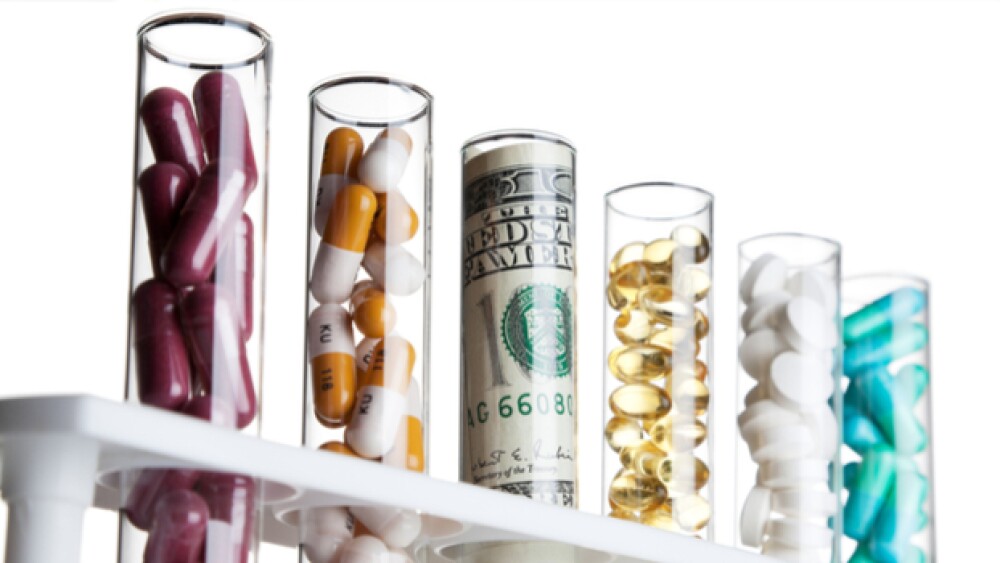One of the criticisms of the biopharma industry—at least in the context of drug pricing—is how much the industry as a whole spends on lobbyists. For example, last year, PhRMA, the industry lobbying group, spent more than $27.5 million on its lobbying activities.
One of the criticisms of the biopharma industry—at least in the context of drug pricing—is how much the industry as a whole spends on lobbyists. For example, last year, PhRMA, the industry lobbying group, spent more than $27.5 million on its lobbying activities.
It probably shouldn’t be surprising. In 2015 and 2016, as the 2016 presidential election was underway, drug pricing became a hot topic. Now, with the 2020 presidential election heating up, drug pricing and Medicare for All have become hot-button issues. With the industry perhaps feeling under attack, one thing they can do is throw money at lobbyists to influence legislature.
Novartis, a Swiss company, recently increased its public relations-related spending for the first quarter of 2019 to $3.2 million, an increase of 450 percent from $580,000.
The website OpenSecrets.org provides a database of lobbying expenses per company. In 2018, for example, Pfizer’s total lobbying expenses were $11.41 million; AbbVie’s were $6.1 million; Biogen’s were $567,000; and Bristol-Myers Squibb spent $3.83 million.
As Benefits Pro notes, “Drug companies are facing an unprecedented threat to their pricing practices as the president and lawmakers from both parties have targeted the high costs of drugs. That has become one of the few areas of bipartisan agreement in an otherwise divisive political climate.”
And perhaps it’s directly related to these efforts on the part of politicians that has seen so many big pharma companies increasing their lobbying spending in the first quarter of 2019. After all, it was late February when seven industry executives were hauled in front of the U.S. Senate Finance Committee to testify on drug pricing. And it was U.S. Senator Chuck Grassley (R-Iowa) who set the tone early, mentioning that his constituents rationed drugs because of high prices or “leaving their prescription on the pharmacy counter because it costs too much.”
Some of the drug-rationing stories revolve around insulin, which has more than doubled in price in the U.S. since 2012. Late last month, Eli Lilly disclosed data showing that the price of its leading insulin product Humalog actually dropped in price by 8% over the past five years. The company also noted that the average net price for drugs after rebates and discounts are factored in has dropped over the past four years. The net price of drugs, the company noted, dropped from 59% of list price in 2014 to 46% in 2018. In that period Humalog dropped 8%.
But the annual cost of insulin for a type 1 diabetes patient in the U.S. has almost doubled from $2,864 in 2012 to $5,705 in 2016. The American Diabetes Association presented a call-to-action based on data showing insulin prices nearly tripled between 2002 and 2013, and in 2017, treatment for both Type 1 and Type 2 diabetes was the most expensive chronic illness in the U.S.
Although not many real changes in drug policy have been enacted in the last two years, one trend appears to be toward more transparency in drug pricing. This has resulted in drug companies revealing prices of their prescription drugs on their websites in order to avoid even more public disclosures in TV advertisements, which has been proposed by the Trump administration.
The FDA has also made efforts to increase the availability of biosimilars in the U.S. Biosimilars are basically generic versions of biologic drugs (like insulin, but more commonly drugs such as AbbVie’s Humira). They are not direct copycats, but are similar, and require a similar regulatory approval path as a new drug.
In the first quarter of 2019, in addition to Novartis’ increase, Merck spent $2.74 million, a more than 200% increase from the last quarter of 2018, but down more than 17% from the same period the year before. AstraZeneca, Biogen and Bristol-Myers Squibb also increased their year-earlier levels.
Benefits Pro writes, “One sign that the drug lobby was losing its grip on Congress came in the first quarter of 2018, when PhRMA was blindsided by a change lawmakers made to Medicare that put drugmakers on the hook for more of seniors’ prescription costs. In that quarter, PhRMA and companies including AbbVie, Bayer, Celgene Corp., Novo Nordisk A/S and Sanofi set quarterly lobbying spending records. America’s Health Insurance Plans, a trade group representing insurers, spent $2.88 million on lobbying, including on Medicare for All, according to its disclosure. That figure was up more than 87% from the previous quarter and up 26% from a year earlier.”
Of course, these financial filings don’t say how companies fall on any particular issue.
Meanwhile, a Kaiser Family Foundation poll found that 24% of people taking prescription drugs and 23% of seniors taking drugs say it is difficult to afford their medications. The majority who say this, 58%, have monthly drug costs of $100 or more, in fair or poor health (49%), with annual incomes less than $40,000 ($35%), or are taking at least four drugs monthly (35%).
The poll also found that 88% of respondents thought requiring drug companies to list prices in their ads was a good idea. Other popular proposals were allowing the federal government to negotiate Medicare prices with drug companies (86%), making it easier for generic drugs to hit the market (88%), and allowing Americans to buy drugs imported from Canada (80%).





